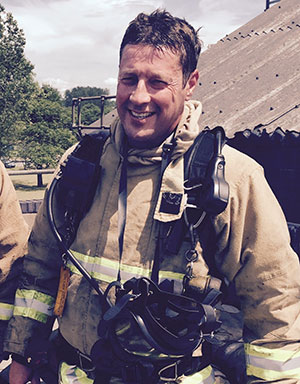15 fire services have now been inspected by her Majesty’s Inspectorate of Constabulary and Fire and Rescue Services (HMICFRS), with widely variable results.
My interest in these inspections is limited to the findings in relation to enforcement. But even in that area the Inspectorate has already found inconsistent approaches to enforcement across the country and whether or not a person responsible for premises is prosecuted for fire safety breaches is effectively a postcode lottery.
The majority of inspections that have taken place paint the fire and rescue services in a positive light. Given the budget cuts of almost one third over of the last 6 years, one could argue that criticising a fire service for lack of enforcement is a bit like turning off the water supply and then complaining about how long it took to put out the fire. Especially when fire protection departments have also had the task of inspecting high-rise buildings since June 2017 to ensure the safety of residents rather than carrying out audits.
Nearly all of the fire and rescue services audited thus far are shown to have solid enforcement models which are followed and used appropriately. The main variations appear when it comes to prosecutions under the Fire Safety Order.
It is still the case that some FRSs take the view that working with businesses and forming relationships with responsible persons is the best way to ensure compliance. Others have a more rigourous approach to non-compliance, and their enforcement figures reflect successful prosecutions and numerous enforcement and prohibition notices.
I have often been asked whether the phrase “working with businesses to achieve compliance” is code for “we are not confident enough to take prosecution.” But in my experience the position is not as simple as that. Clearly, limited resources is a significant factor. Fire safety departments frequently complain that prosecutions have taken team members out of their usual duties for at least a year.
But confidence is still an issue. Whilst training has been commended in a number of inspections, fire safety officers are not police officers, who carry out criminal investigations every day of the week. Training in this regard may have taken place a number of years before a criminal investigation arises, and skill sets are lost as a result of non-use.
The type of training is important and must be geared to imbuing investigating officers with the sense that the courts will treat them fairly and with respect. After all, the courts love firefighters and fire officers. They are still seen as brave, selfless professionals whose main aim is to make people safe. Let’s face it, they carry people out of burning buildings, they wear a nice uniform and hey-they’re not police officers.
Nevertheless, many fire services and fire officers fear the court system. This may be because their training has involved them being cross-examined about legal procedures and knowledge that they do not possess, resulting in a fear which leads to paralysis when faced with an ongoing investigation.
Obviously, I must disclose an interest at this point. I am a lawyer who benefits from prosecutions being taken. There is nothing wrong with the “working with businesses” approach to achieve compliance, but the Fire Safety Order requires and demands enforcement action when necessary.
What happens when circumstances arise, such that a prosecution must be taken? If a fire occurs, resulting in fatalities or injuries, and there were breaches which contributed to those injuries, then a FRS will have little option but to prosecute because the media and injured parties will demand it. This means that the first experience of the court process and the experience and skill set required for putting a prosecution together will be needed in a high profile environment rather than in a standard case. This puts unnecessary pressure on inspecting officers and FRS as a whole to deliver the required result.
It seems unfair that fire services are being audited and inspected at the same level as the police. However, in criminal proceedings, it doesn’t matter who brings the prosecution, the rules of the game are the same and the bar for competency in this regard is set at a high level.
The question is whether the fact that fire and rescue services are now be held to account for the way in which they approach enforcement is a good thing. The inspecting officers ask “how effective is the service at keeping people safe and secure?” The service is assessed as to how well it will make sure that businesses comply with fire safety legislation. The service is then judged on how it protects the public through fire regulation. Enforcement models are examined and officers are questioned as to training and experience in the issuing of notices and in the carrying out of prosecutions.
Tranche 1 of the inspections has now been completed. 8 fire rescue services have been assessed as “good”; 5 require improvement and 1 has been assessed as inadequate.
What seems clear is that where prosecutions have been taken, and lots of notices issued, the Inspectorate appear to have been impressed. One can only conclude that now the reputation of a fire and rescue service is at stake through the publication of inspection and audit results, senior management teams will be considering their position in relation to enforcement, and that is likely to mean-more prosecutions.



